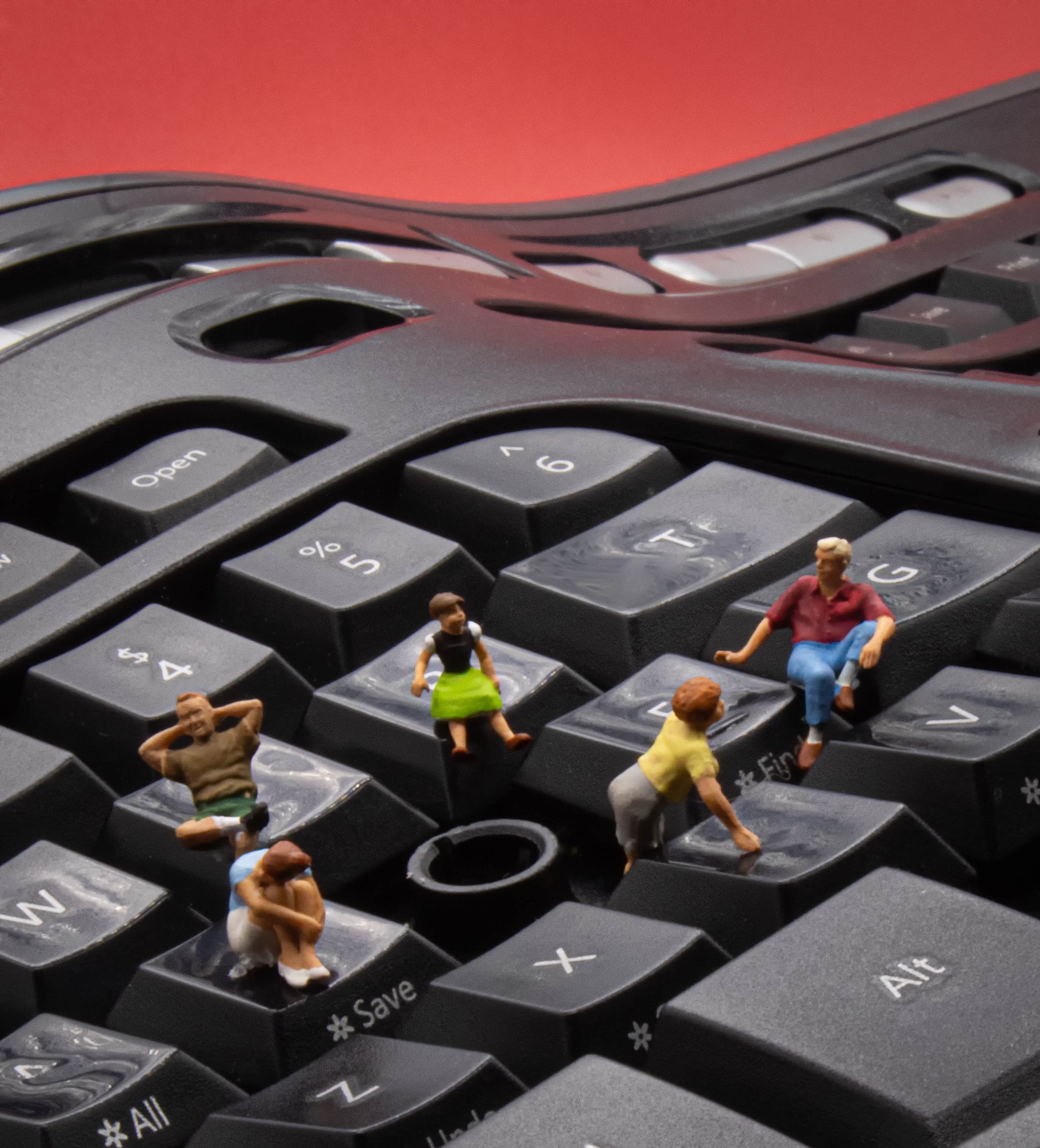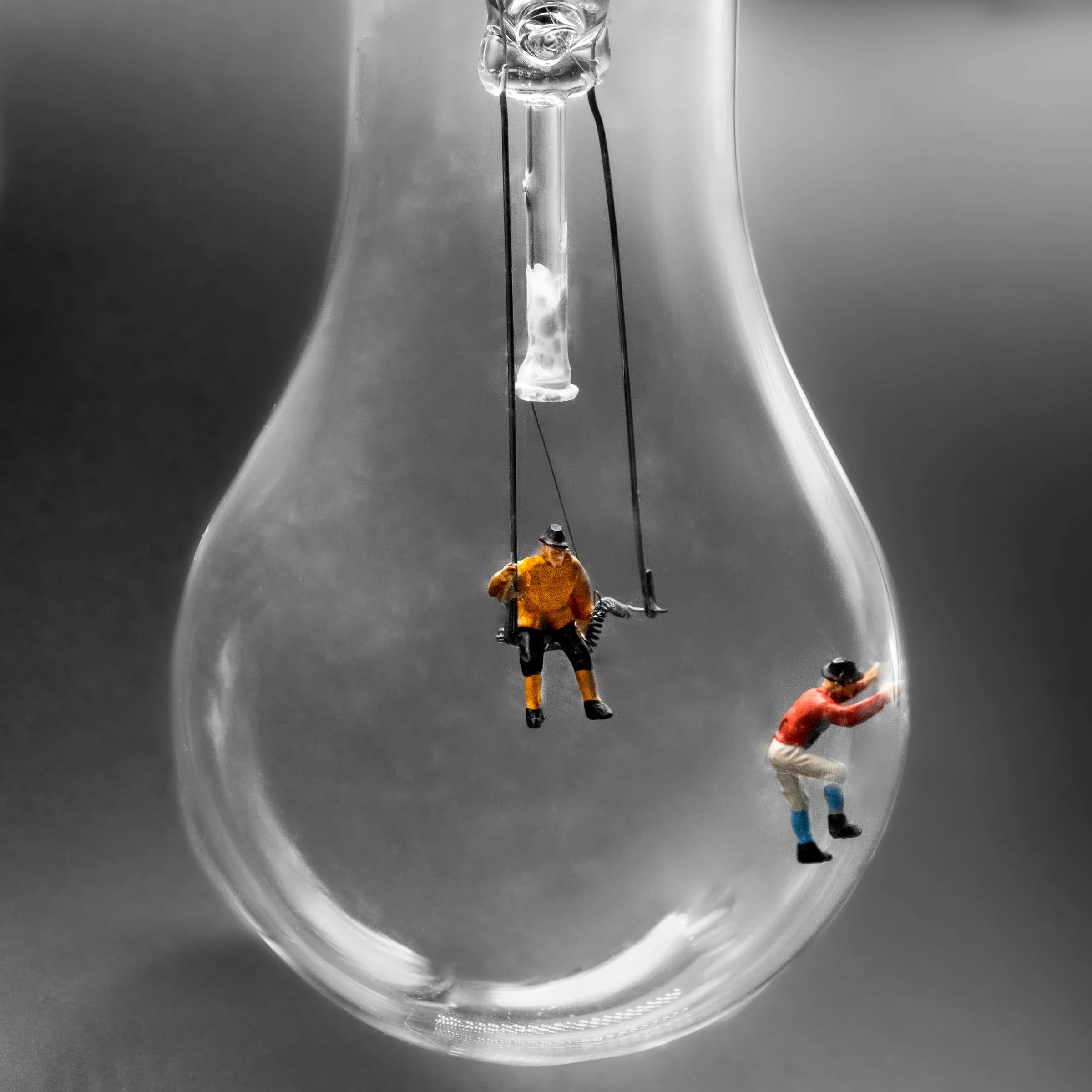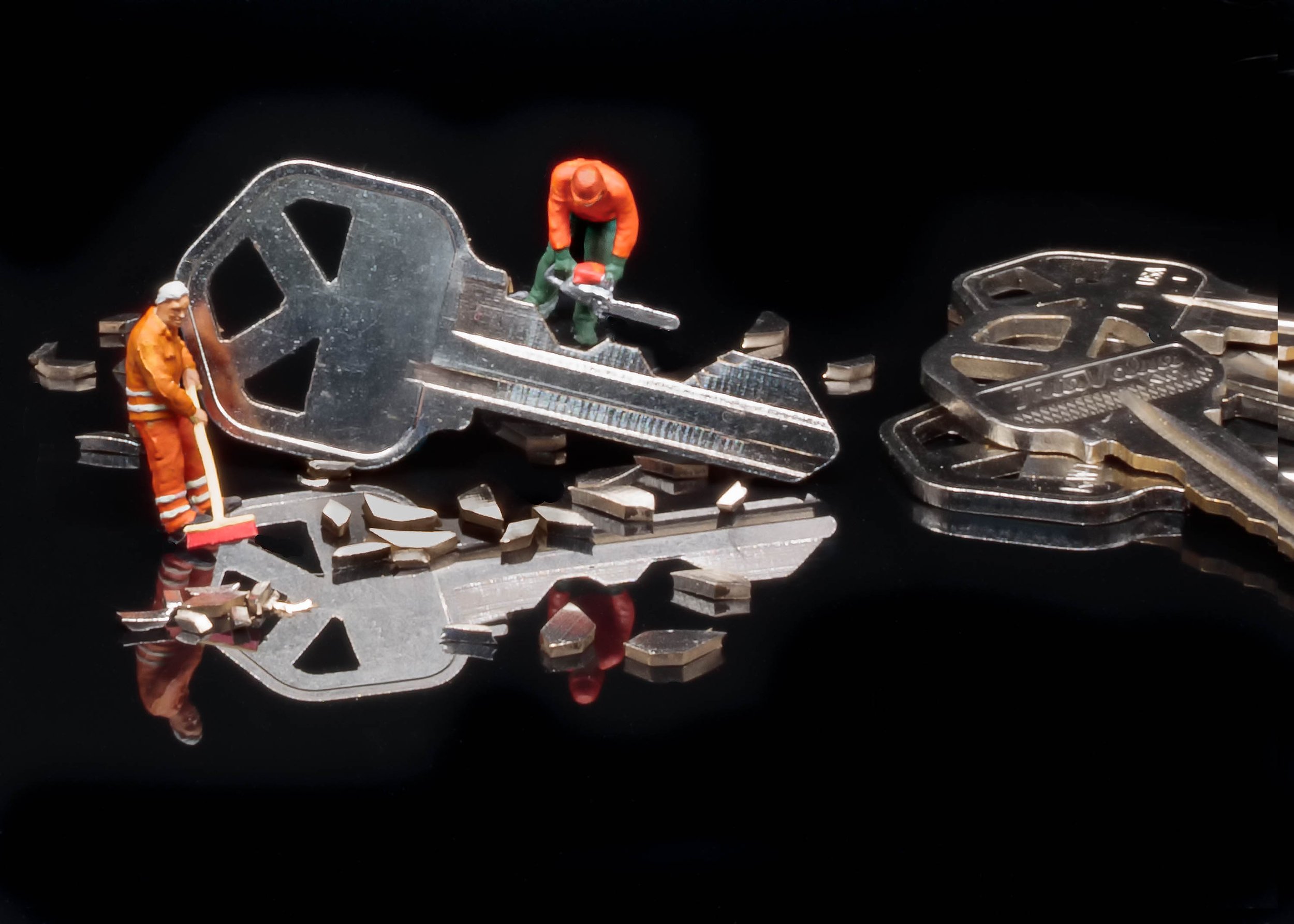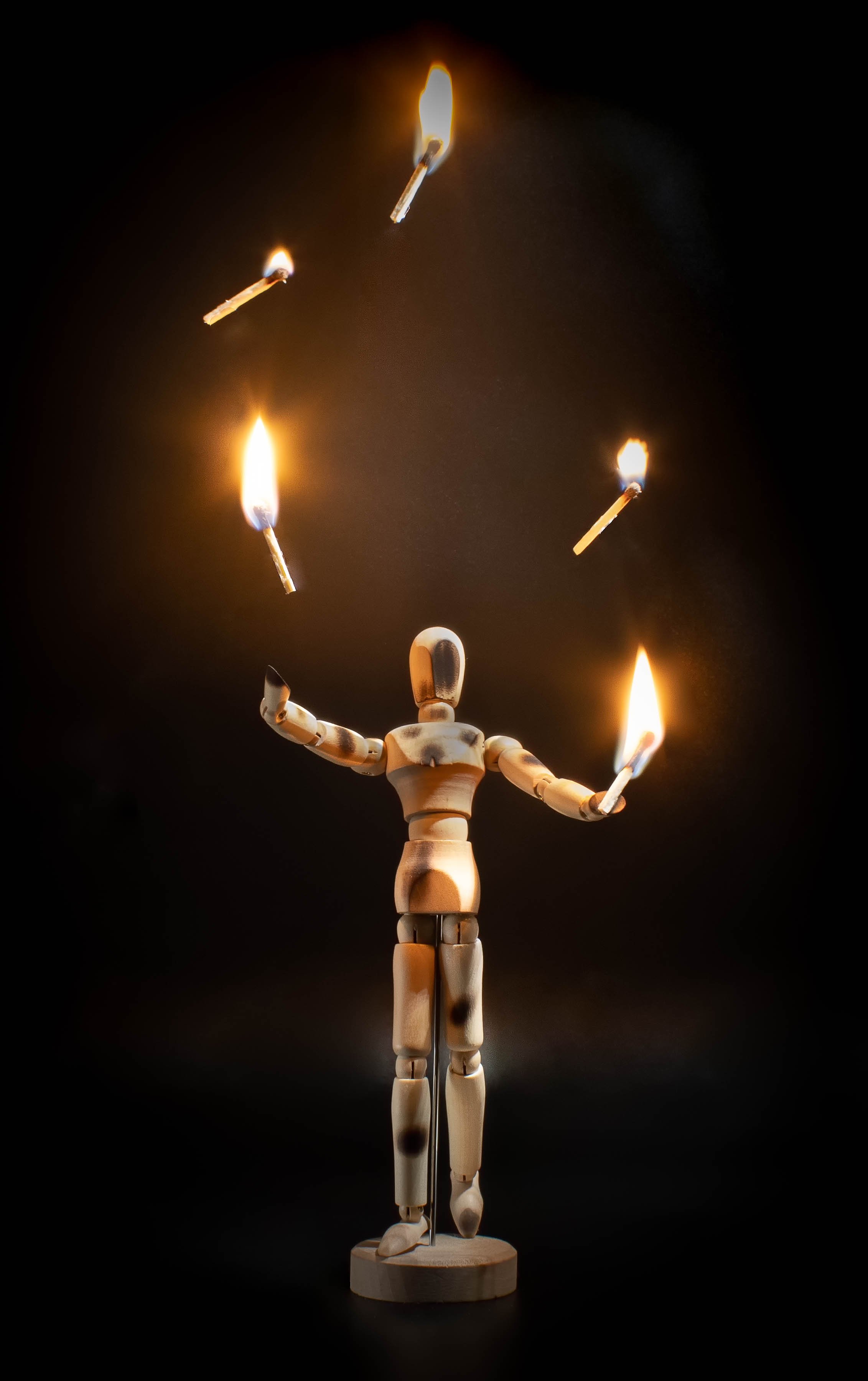Artist David Birozy
Congratulations to David Birozy for earning his place as a Finalist in the Boynes Emerging Artist Award 7th Edition!
Who are you?
My name is David, and I live in the State of Wyoming in the United States. The small population combined with the large area means no traffic, no long lines, no crowds, no pollution, and a less rushed and hectic way of life. I retired from one career after 24 years. I moved to Wyoming about nine years ago to get away from the big city life and started a second career.
I bought my first DSLR about 25 years ago. I didn't know much about photography and tried to teach myself without doing much reading or research. I couldn't figure out concepts such as ISO or how they fit into the exposure triangle. I never got out of Auto mode and used the camera predominately for family snapshots. I bought Photoshop but found it far too difficult to use. At that time, there wasn't the volume of books, videos, and courses to learn the program as there is now. After my camera was stolen, I never replaced it because I couldn't justify spending that much money for something I just took snapshots with.
In 2019 my wife gave me a camera for Christmas. I spent the following few months learning as much as possible about photography. In April 2020, I started to get serious about taking pictures. I took the photo Deconstructing a Kiwi a few months later, in July 2020. It was the first photo I took using HO-scale figures. I found I really enjoyed toy photography and black and white photography. Although my portfolio is pretty eclectic, these two genres are still my favorites.
“Climbing A Grater”
Photography
By David Birozy
What inspired you to utilize photography as a medium?
I tried my hand at a variety of different forms of art. Some I was decent at, some I was not. Some I found boring because I'm a person who likes instant gratification. I don't want to spend days and days working on a single drawing.
One thing that drew me to photography was the dozens of genres to explore. As I mentioned, the two I have found the most enjoyable are toy photography and black and white photography.
One of my favorite subjects to photograph in black and white are prisons. Being such a small state, Wyoming only has one maximum security prison in operation, and I'm fortunate that in my town because there are three prisons dating back to the late 1800s.
While looking through photos online, I stumbled upon toy photography and was hooked. "Deconstructing a Kiwi" falls into this genre. I'm not a person to follow the crowd, so I'm always looking for something unique. Toy photography not only met that requirement but I was drawn to toy photography because of the creativity it affords. That's where my inspiration came from.
“Computer Connection”
Photography
By David Birozy
How would you describe your work?
Both toy photography and black and white photography are types of artistic photography. Adobe describes artistic photography as "Discover[ing] new ways to craft intriguing images through … different explorations of photographic art." A few examples of artistic photography are still photography, black and white photography, and fine art photography. I consider toy photography a subset of still photography.
More specifically, I would say the best description of my work is "off the beaten path." I'm not a landscape photographer. I'm not a wildlife photographer. I'm not a portrait photographer. I'm an artistic photographer, and my choice of still life is toy photography. Toy photography isn't the first thing that comes to people's mind when they think of photography, thus why I describe my work as "off the beaten path."
“Fairy Fire”
Photography
By David Birozy
Can you discuss the inspiration and thought process behind "Deconstructing a Kiwi"?
Interestingly, Deconstructing a Kiwi wasn't my initial plan. I intended to shoot something completely different with the kiwis. I don't even remember what I had in mind. I was prepping for the original kiwi shoot when I realized I had cut the kiwis in such a way that I was unable to use them. All I had left of the fruit was a bowl of kiwi bits.
I was frustrated that I mangled the kiwis, which got me thinking. I had just "deconstructed" the kiwi. The "deconstructed" term came to mind because it was often used in a cooking television show my wife and I watched, Chopped. Whenever a contestant had a dish that wouldn't hold its shape, they served it to the judges as "deconstructed." It had the right ingredients and the right taste. It just looked like a pile of ingredients. In essence, that was what I had done with the kiwis.
I had just purchased my first few sets of HO figures, which is where the figures in my photo came from. I elected to continue down the "deconstructed" route and used the figures to deconstruct the kiwi.
“Deconstructing A Kiwi”
Photography
By David Birozy
Can you walk us through the technical steps of creating "Deconstructing a Kiwi"?
I already had the kiwi broken down into small pieces, so I cut them into consistent sizes. I looked at the figures I had and tried to devise a way to use them. One set was lumberjacks, so I had one using a chainsaw to peel a kiwi. I had some construction figures with shovels, so I came up with the idea to use one to remove the center part of the kiwi. I had some street sweepers, so I used them to sweep up the kiwi seeds.
I set all of this into a lightbox I had set up on my dining room table. I secured the figures with museum wax and arranged the kiwi. It took quite a bit of experimentation to get everything to fit into the frame and to overcome the problem with depth of field.
HO figures are 1:87 scale. You get a sense of scale in the photo with them next to the fruit. I had to zoom in fairly close to make the photo look right, creating a shallow field depth. In other words, the fruit in the front and the back were out of focus. I moved everything as close as possible to each other, front to back, to keep the parts near the same plane.
I ended up using a very narrow aperture (f/16) to overcome the rest of the depth of field problem and to keep from blowing out all the white. A shutter speed of 1/25 of a second with an ISO of 400 gave me the best exposure I could come up with. Keep in mind that this was one of the first toy photographs I shot and the first photograph using HO figures. With only a few months of photography experience behind me, I did my best to work with the exposure triangle (ISO, f-stop, shutter speed). If I had recreated the photo today, having three years of experience, it wouldn't have been nearly as difficult.
I did the processing in Adobe Lightroom. I had to bump the exposure up over two stops to brighten everything up. Some adjustments to the contrast, highlights, and shadows finished most of the adjustments. At the time, though I understood histograms, I wasn't familiar with curve adjustments. If I had to do it again, I'd make more adjustments in the blacks and midtones
“Hanging Out At Work”
Photography
By David Birozy
What do you hope to communicate to an audience with your work?
This has always been a challenging question for me to answer. I'm very black and white. I am much more of a concrete thinker than an abstract thinker, which means I tend to see things as they are. It also means I have difficulty seeing, interpreting, or using symbolism.
That said, taking my work as a whole (not just Deconstructing), I want people to see my work and smile. I want them to find joy in the little things. To some extent, that's what toy photography is about. It's about being creative and envisioning a scene for the toys to interact with. Bringing this back to Deconstructing, if you look at an HO scale model railroad and see these figures on display, you wouldn't give them a second glance. They are just part of the scenery. My goal as a photographer is to take them out of that setting and make them the star of their own show.
“Hanging Out In A Bulb”
Photography
By David Birozy
Can you talk about your biggest learning experience during the process of creating your work?
Most toy photograph is shot up close. One thing that surprised me is that the camera picks up absolutely. I have three dogs and three cats, so there is hair everywhere. I wipe down the set and blow it clean with compressed air to the point it looks perfect. But when I look at the photos, I'm shocked at how much post-production work needs to be done to clean up the photos. It's not just the hair, either. It's dust, dirt, adhesive residue, and so forth.
“How Keys Are Really Cut”
Photography
By David Birozy
Can you discuss your biggest success since starting your artistic journey?
My most significant success is my improvement over the past few years. It happens slowly, so many times you don't feel like you are making progress. However, when you look back at your earlier photographs, you see many things you'd do differently to improve it; you know you're on the right patch.
I attribute a lot of my success to the time and effort I've put into learning about photography. Dozens of books, online courses, videos, and critiquing photographs. That's only part of the equation. Being book-smart only gets you so far. You have to apply what you've learned. Not dozens of times, not hundreds of times, but thousands of times. I've gone out in the fall when the leaves turn colors and shot over 1,200 photos. I've done toy shoots where I've taken hundreds of photos. I go through all the photos, find the best ten or twenty pictures and start working on them in post. I eventually get to the point where I'll have two or three that I like a lot. Taking photographs using different settings, critiquing them, and culling them is a learning process in itself and is how I put what I've learned into practice.
“Overweight”
Photography
By David Birozy
What projects are you working on currently?
One problem is that I have more ideas than I have time to make them come to life. I have several ideas floating around in my head for my next shoot. I recently bought enough candy to fill two grocery bags. I have several shoots planned with them, and they'll either be paired with HO scale figures or wooden artist mannequins. I do have a confession to make. I've planned these shoots several times, but I've always eaten the props before I get everything set up.
Earlier this week, I received the last few HO-scale vampire figures I need to put together what I hope will be an elaborate graveyard scene. I'm also trying to put together a very windy park scene.
“Still Life Tea Holder”
Photography
By David Birozy
What is your dream project or piece you hope to accomplish?
I'd have to say that my main goal is to incorporate more action and movement in my photographs. My current photos are pretty static. I want to make future photographs more dynamic. The windy park shoot I'd like to do is an excellent example of something incorporating movement.
“Flame Juggling”
Photography
By David Birozy
Lastly, I like to ask everyone what advice they would give to their fellow artists/photographers, what is your advice?
One thing that made a difference in my photographs over the past year was learning how to critique other people's work. My advice is to spend some time learning how to really critique photographs. I don't mean deciding whether you like a photo or not. I mean learning how to critique the building blocks that make the photographs impact, the technical elements, and the composition. I purchased a book about how to critique photographs properly. Once I started critiquing other people's photographs, I found what worked for me and what did not. You'll note I said what worked "for me." In the end, a critique is an opinion. There's no right or wrong answer. Critiquing photographs help you pin down the style that's best for you.









